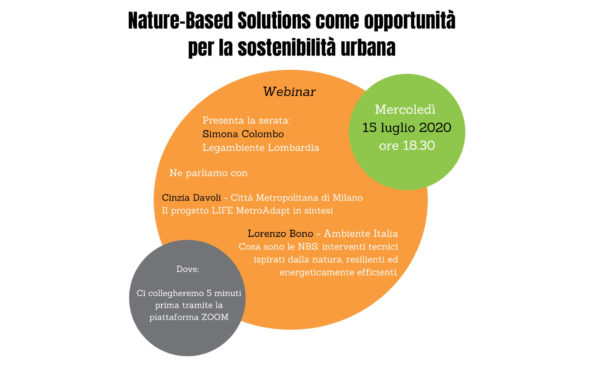 On the evening of the 15th of July, the 3rd public seminar of the LIFE Metro Adapt project was held online, as part of the project dissemination activities. The event focused on the importance for cities and urbanized areas to be prepared for the inevitable impacts of climate change that will affect them in the near future.
On the evening of the 15th of July, the 3rd public seminar of the LIFE Metro Adapt project was held online, as part of the project dissemination activities. The event focused on the importance for cities and urbanized areas to be prepared for the inevitable impacts of climate change that will affect them in the near future.
Simona Colombo of Legambiente Lombardia introduced the participants to the core of the project, whose aim is to mainstream climate change adaptation strategies in the Metropolitan Area of Milan (CMM), fostering the creation of a common well-structured governance related to climate change adaptation among the local authorities.
Afterwards, Lorenzo Bono – integrated planning and management expert of Ambiente Italia – illustrated the data collection phases regarding thermal anomalies and flood risk in Milan Metropolitan Area and the subsequent data analysis produced by the technical partners of the project. Furthermore, he introduced the concept of “Nature-Based Solutions (NBS)“, explaining the importance of their adoption in urbanized areas to mitigate flood risk and reduce the effects of the “heat islands” phenomenon.
NBS integrates Nature in man-made environments and represent one of the most effective solutions in tackling climate change adaptation in heavily urbanized areas, enhancing the crucial role of cities and citizens in directing and managing future transformations. They are part of the different adaptation measures that can be adopted in urbanized areas:
- Innovative technological measures (grey measures);
- Ecosystems-based adaptation actions (green measures);
- Behavioral, managerial and governance approaches (soft measures).
The LIFE Metro Adapt project promotes the NBS (green measures) as good adaptation practices that meet environmental, social and economic objectives and has divided them into three types: i) green on built environment; ii) ground green spaces; iii) NBS for water management.
For each typology, a simplified technical data sheet has been created, where it is possible to find different information on the general characteristics of NBS: i) socio-economic benefits; ii) environmental impact; iii) advantages and disadvantages of their application and project indications.
You can download the NBS catalogue and guidelines here.







